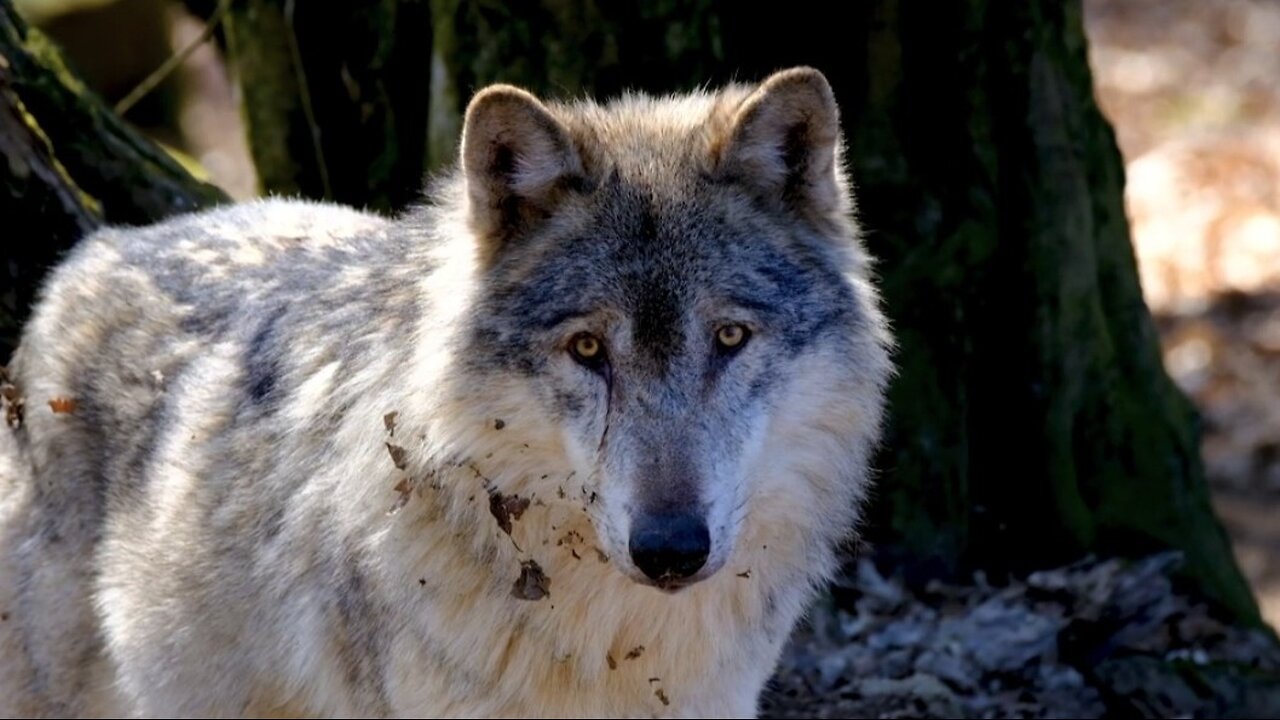Premium Only Content

"Inside the Wolf Pack: A Look at Their Social World"
The wolf (Canis lupus) is one of the most widely recognized and studied animals in the world. It belongs to the family Canidae, which also includes domestic dogs, coyotes, and foxes. Here’s a detailed overview of the wolf:
Physical Description
Wolves are large carnivores, with males generally weighing between 30 to 80 kg (66 to 176 lbs), and females being slightly smaller. Their body length ranges from 1 to 1.6 meters (3.3 to 5.2 feet), with a tail measuring around 30 to 50 centimeters (12 to 20 inches). Wolves have a thick double-layered coat that helps them survive in various climates, from the cold Arctic tundra to temperate forests. Their coat color varies from gray, white, black, or reddish, depending on the subspecies and the environment.
Habitat
Wolves historically inhabited a wide range of environments across North America, Europe, and Asia. They are highly adaptable and can live in forests, grasslands, deserts, tundras, and mountainous regions. However, their range has significantly reduced due to human activity, such as hunting and habitat destruction. Today, wolf populations are found in remote wilderness areas, protected reserves, and national parks.
Behavior and Social Structure
Wolves are highly social animals that live in packs, which typically consist of a dominant breeding pair (the alpha male and alpha female), their offspring, and other subordinate wolves. The pack size can range from 2 to 30 individuals, depending on the availability of prey and territory size. The social structure within a wolf pack is hierarchical, with a clear dominance system, and the alpha pair is responsible for leading and defending the pack.
Wolves communicate using a variety of vocalizations, including howls, growls, and whines, as well as through body language and scent marking. Howling is the most iconic wolf behavior, often used to communicate with pack members, mark territory, or signal the start of a hunt.
Hunting and Diet
Wolves are apex predators and play a crucial role in maintaining ecosystem balance by controlling prey populations. They primarily hunt large ungulates like deer, elk, moose, and caribou, but they are also opportunistic feeders and will hunt smaller mammals, birds, and even fish if necessary. A wolf pack works cooperatively during hunts, using strategy and endurance to chase down and exhaust their prey.
After a successful hunt, the pack members feed in a strict hierarchy, with the alpha pair eating first. Wolves have powerful jaws and sharp teeth designed to tear through flesh and bone, and they can consume up to 9 kg (20 lbs) of food in one sitting.
Reproduction and Life Cycle
The breeding season for wolves typically occurs between January and March. The alpha pair is usually the only pair that breeds, and after a gestation period of around 63 days, the female gives birth to a litter of 4 to 6 pups. Wolf pups are born blind and helpless, relying entirely on their mother and the pack for care. Around two weeks after birth, their eyes open, and by the time they are two months old, they begin exploring outside the den.
By six months, wolf pups are strong enough to join the pack on hunts. Wolves reach maturity at around 2 to 3 years of age and may leave their natal pack to form their own or find a mate.
Conservation and Threats
Wolves have faced significant persecution throughout history, primarily due to conflicts with humans over livestock predation. Extensive hunting, trapping, and habitat destruction caused wolf populations to decline dramatically, especially in Europe and North America. However, conservation efforts, such as legal protection and reintroduction programs, have helped some wolf populations recover.
Wolves are currently classified as "Least Concern" by the IUCN, but certain subspecies, such as the red wolf (Canis rufus), are critically endangered. Wolves continue to face threats from illegal poaching, habitat loss, and conflicts with livestock farmers.
Role in Culture and Mythology
Wolves have played a significant role in human culture, mythology, and folklore for centuries. In some cultures, wolves are revered as symbols of strength, loyalty, and wilderness, while in others, they are feared as dangerous predators. Stories like "Little Red Riding Hood" and various wolf-related myths have contributed to the complex and often contradictory perceptions of wolves in human society.
Ecological Importance
Wolves are considered a keystone species, meaning their presence has a large impact on the health of ecosystems. By controlling prey populations, they help prevent overgrazing and allow vegetation to thrive, which in turn supports a wide variety of other species. For example, the reintroduction of wolves to Yellowstone National Park in the U.S. has led to a resurgence of aspen and willow trees and increased biodiversity, a phenomenon known as "trophic cascade."
-
 1:14:52
1:14:52
TheCrucible
3 hours agoThe Extravaganza! EP: 29 (8/28/25)
84.8K7 -
 1:09:58
1:09:58
Kim Iversen
3 hours agoTrans. Russian. Anti-Israel. Anti-Trump. Are You Buying This Story?
30.3K59 -
 1:51:08
1:51:08
Redacted News
3 hours agoEMERGENCY! BILL GATES CULT MEMBERS FOUND PLANTED INSIDE MULTIPLE FEDERAL AGENCIES, RFK FURIOUS
129K87 -
 31:02
31:02
Kimberly Guilfoyle
4 hours agoFull Breaking News Coverage: Live with John Nantz & Steve Moore | Ep250
28.6K13 -
 1:15:19
1:15:19
vivafrei
5 hours agoShameless Politicization of Tragedy! Susan Monarez is OUT! Pritzker is an IDIOT! & MORE!
130K49 -
 9:52
9:52
Tundra Tactical
3 hours agoCracker Meme Review On Tundra Meme Review!!
9.93K -
 LIVE
LIVE
Wayne Allyn Root | WAR Zone
6 hours agoWAR Zone LIVE | 28 AUGUST 2025
84 watching -
 LIVE
LIVE
LFA TV
12 hours agoLFA TV ALL DAY STREAM - THURSDAY 8/28/25
844 watching -
 1:39:30
1:39:30
freecastle
5 hours agoTAKE UP YOUR CROSS- CREATED IN HIS IMAGE
18.2K3 -
 1:49:30
1:49:30
The Quartering
6 hours agoCount Dankula Live On Migrant Crisis In Europe, Whiteness & More
136K183